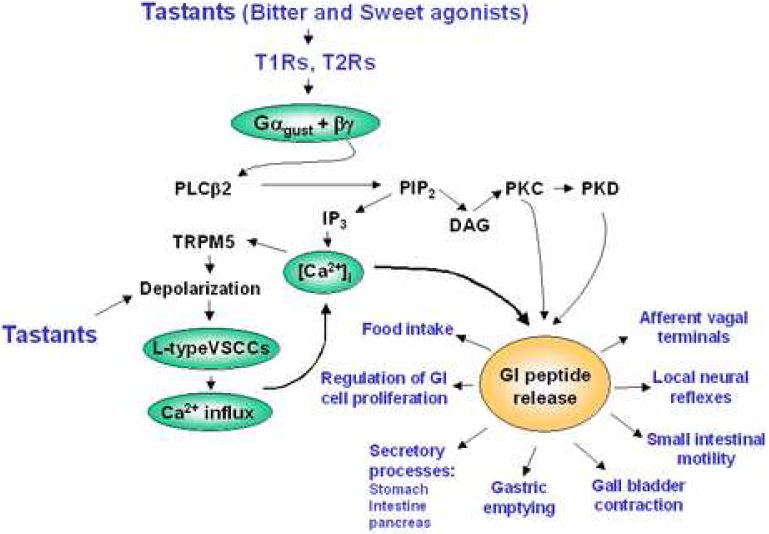Figure 1.

A scheme showing that tastant-induced signaling via T2Rs and T1Rs in the apical portion of an open enteroendocrine cell engages gustducin, PLCβ2, TRPM5 and L-type VSCCs leading to an elevation of the intracellular concentration of Ca2+. This second messenger in combination with diacylglycerol (DAG)-mediated activation of protein kinase C (PKC) and protein kinase D (PKD) triggers the release of GI peptides into the basolateral portion of the cell. The gut hormones, acting in an endocrine and/or paracrine manner, exert multiple physiological effects. Detailed description and abbreviations can be found in the text.
